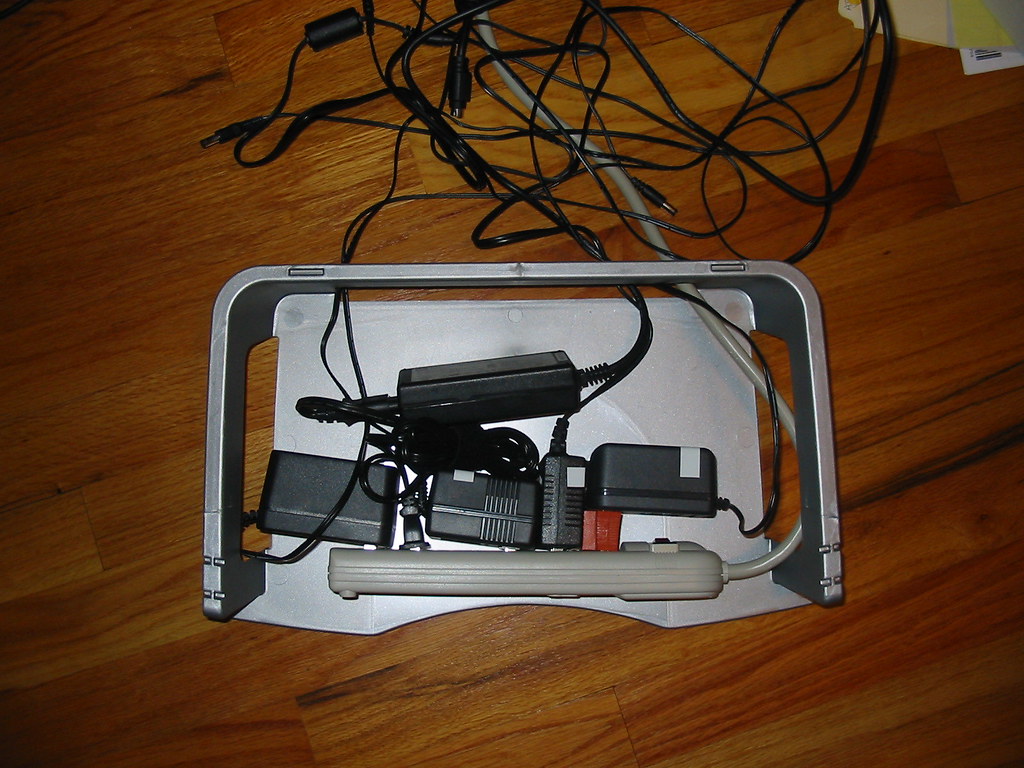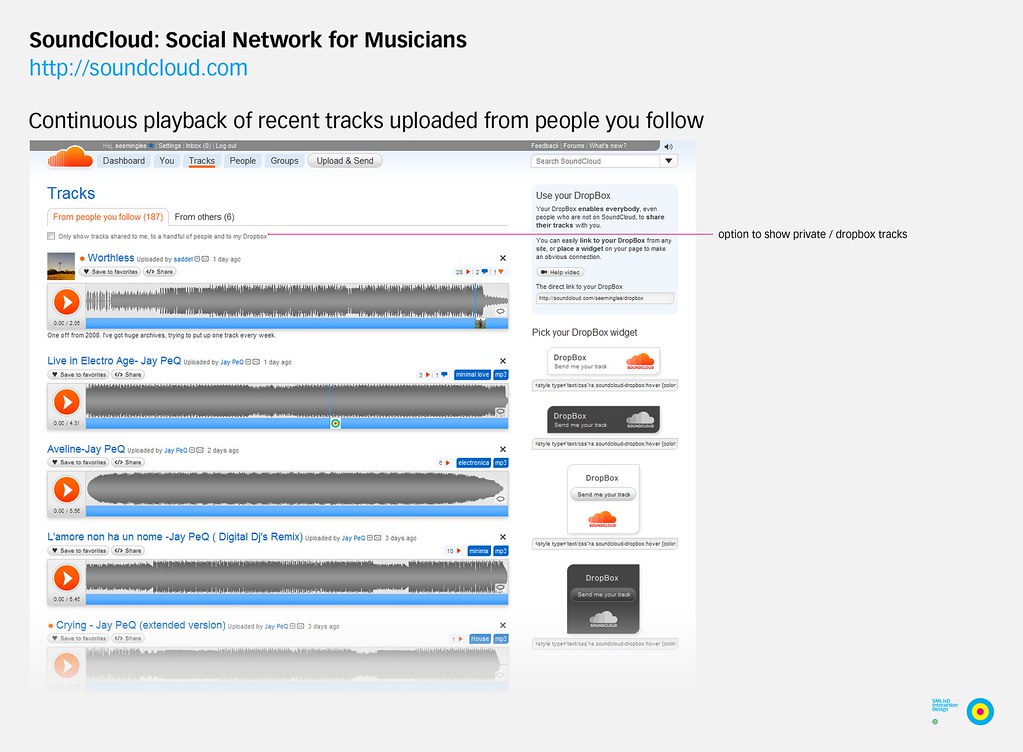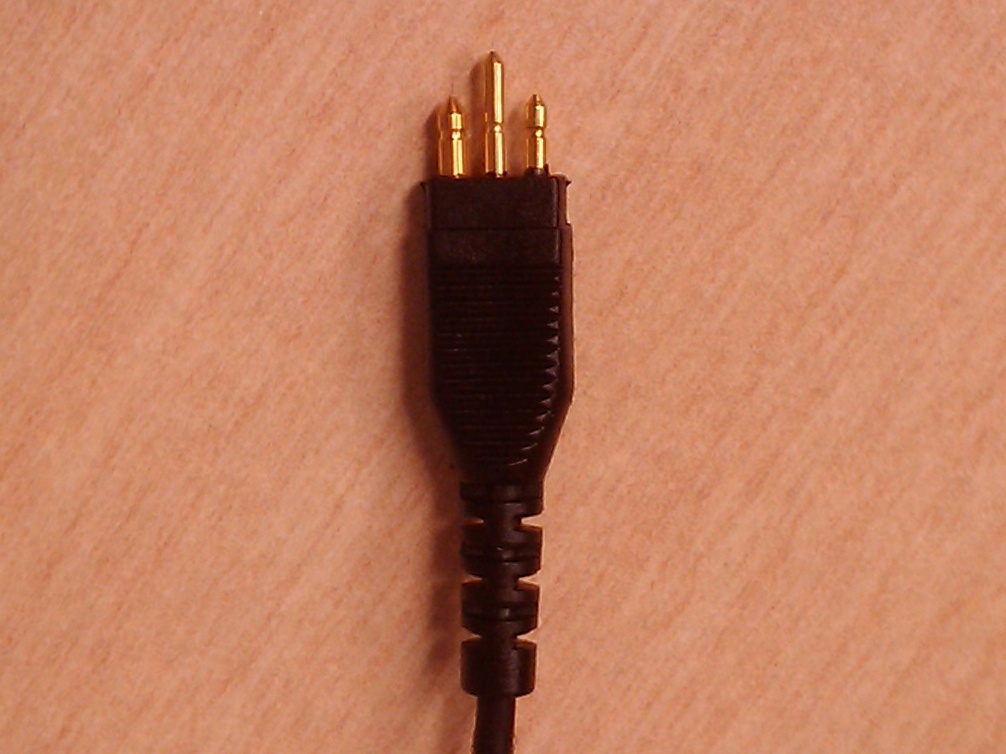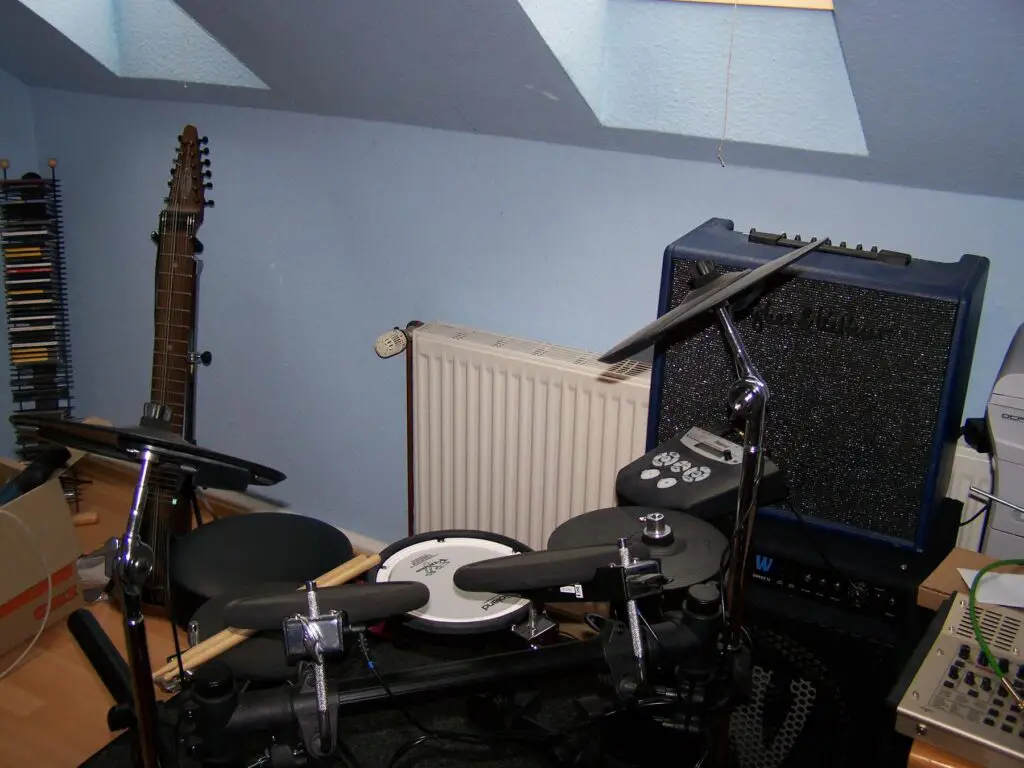Are you ready for an exciting journey into the world of home studio recording? If you want to create professional-quality audio recordings in the comfort of your own home, you’ll need a music production kit. A music production kit is a collection of essential components that work together to bring your creative vision to life. In this complete guide, we’ll explore the essential components of a music production kit, recommended brands and models, how to choose the right digital audio workstation, and much more! Whether you’re an aspiring musician, podcaster, or voiceover artist, this guide will help you create high-quality recordings that sound great on any platform. So, let’s dive in and explore the exciting world of music production kits!
Table of Contents

Essential Components of a Music Production Kit
A music production kit is an essential tool that every home recording studio needs. The kit consists of several components that work together to create high-quality recordings. Here are some of the most important components of a music production kit:
Audio Interface
An audio interface is a hardware device that connects your recording gear to your computer. It converts analog signals into digital signals that your computer can understand. Audio interfaces come in different shapes and sizes, with various features to consider. Some of these features include the number of inputs and outputs, microphone preamps, and connectivity options.
Microphones
Microphones are essential for capturing the sound of your vocals and instruments. There are two main types of microphones: dynamic and condenser. Dynamic microphones are ideal for recording loud sources like drums, guitar amps, and bass cabs. Condenser microphones are better for recording vocals, acoustic instruments, and other sources that require more detail and sensitivity. When choosing microphones, consider factors such as sound quality, durability, and versatility.
Headphones
Headphones are crucial for monitoring your recordings. They allow you to hear the audio in detail and make critical decisions about the mix. Closed-back headphones are the best choice for recording, as they provide isolation and prevent sound from leaking into your microphone. When choosing headphones, consider factors such as comfort, sound quality, and durability.
Speakers
Studio monitors are specialized speakers designed for music production. They provide a flat, accurate frequency response, allowing you to hear your recordings precisely as they sound. It’s essential to choose studio monitors with a flat frequency response to ensure accurate sound reproduction. When choosing studio monitors, consider factors such as room size, listening position, and budget.
MIDI Controller
A MIDI controller is a device that allows you to control virtual instruments and software synthesizers with physical knobs, sliders, and buttons. It provides a more tactile and intuitive way to interact with your music production software and can help speed up your workflow. When choosing a MIDI controller, consider factors such as the number of keys, the number of knobs and sliders, and the type of action.
Audio Cables
Audio cables are the connectors that link your music production kit components. They come in different types, including XLR, quarter-inch, and RCA cables. It’s essential to use high-quality cables to avoid signal loss and interference. When buying audio cables, consider factors such as length, quality, and durability.
Studio Furniture
Studio furniture includes chairs, desks, and stands designed for home recording studios. They help create a comfortable and ergonomic workspace and can enhance your productivity and creativity. When choosing studio furniture, consider factors such as size, portability, and adjustability.
Including these essential components in your music production kit will help you create professional-quality recordings in your home recording studio.

Recommended Brands and Models
Choosing the right recording gear is crucial for creating high-quality audio recordings. With so many brands and models available, it can be challenging to know where to start. Here are our top picks for each component of a music production kit:
Audio Interfaces
- Focusrite Scarlett 2i2: This audio interface is a great choice for beginners as it’s affordable and has high-quality preamps. It offers two inputs and two outputs, making it suitable for small recording setups.
- Universal Audio Apollo Twin: This is a more expensive option but is worth the investment for more experienced musicians, as it has top-of-the-line preamps and high-quality converters that produce extremely clear sound. It offers two inputs and six outputs, making it suitable for larger recording setups.
Microphones
- Shure SM7B: This microphone is great for recording vocals and is commonly used in professional studios. It has a smooth, warm sound and a tight polar pattern that helps reduce background noise.
- Audio-Technica AT4053B: This versatile microphone can be used for recording both vocals and instruments, and is known for its exceptional clarity. It has a hypercardioid polar pattern that helps isolate the sound source, making it suitable for noisy environments.
Headphones
- Audio-Technica ATH-M50x: These headphones are a popular choice for recording as they provide accurate sound reproduction and are comfortable to wear for long periods. They have a closed-back design that helps isolate the sound and prevent sound leakage.
- Sennheiser HD 280 Pro: These headphones are great for recording as they provide excellent isolation and prevent sound from leaking into your microphone. They have a closed-back design and a tight, accurate bass response.
Speakers
- KRK Rokit 5 G4: These studio monitors provide accurate sound reproduction and are a great choice for beginners. They have a bi-amped class-D amplifier that delivers balanced sound across the frequency range.
- JBL 305P MkII: These studio monitors are a more expensive option but are worth the investment for more experienced musicians, as they provide exceptional clarity and accuracy. They have a bi-amplified class-D design that delivers powerful, accurate sound with minimal distortion.
When choosing recording gear for your music production kit, consider your budget, the type of music you want to create, and the specific features you need for your recording setup. These recommended brands and models are a great starting point for building a high-quality music production kit.

Choosing the Right Digital Audio Workstation (DAW)
A digital audio workstation (DAW) is a software application that allows you to create, record, edit, and mix audio. Choosing the right DAW is crucial for creating high-quality recordings in your home recording studio. Here are some of the most popular DAWs available in the market:
Pro Tools
Pro Tools is one of the most widely used DAWs in the professional music industry. It offers advanced features such as extensive audio editing capabilities, MIDI sequencing, and high-quality plugins. Pro Tools is a great option for those who require a powerful and versatile DAW with a wide range of features.
Logic Pro X
Logic Pro X is a popular DAW for Mac users. It offers a user-friendly interface, advanced MIDI editing capabilities, and a vast library of virtual instruments and plugins. Logic Pro X is a great option for those who need a reliable and efficient DAW that is easy to learn and use.
Ableton Live
Ableton Live is a DAW that is popular among electronic music producers. It offers a unique session view that allows you to create and perform music in real-time. Ableton Live is a great option for those who need a DAW that is optimized for live performance and improvisation.
FL Studio
FL Studio is a DAW that is popular among hip-hop and electronic music producers. It offers an intuitive interface, advanced sequencing capabilities, and a vast library of virtual instruments and plugins. FL Studio is a great option for those who need a DAW that is easy to use and offers a wide range of features for beat-making and electronic music production.
Cubase
Cubase is a DAW that is popular among film and television composers. It offers advanced scoring capabilities and a vast library of virtual instruments and plugins. Cubase is a great option for those who need a DAW that is optimized for scoring and composition.
When choosing a DAW, consider factors such as your budget, operating system, and the specific features you need for your music production workflow. It’s also a good idea to try out different DAWs before making a final decision, as each one has its own unique strengths and weaknesses.
Recording Gear for Musicians
In addition to a music production kit, musicians may need other recording gear to create high-quality recordings. Here are some recommended brands and models:
Guitars
When it comes to recording guitars, the choice of instrument can make a big difference in the final sound of your recordings. Here are two classic choices for recording guitars:
- Fender Stratocaster: This guitar is a classic choice for recording as it provides a versatile sound that can be used in many different genres. It’s known for its bright, clear tone and is a popular choice for clean and distorted guitar tones alike.
- Gibson Les Paul: This guitar is known for its rich, warm tone and is a popular choice for rock and blues recordings. It’s a bit heavier and has a thicker neck than the Stratocaster, which can lend itself well to heavier playing styles.
Basses
Bass guitars are essential for adding depth and dimension to your recordings. Here are two popular choices for recording bass:
- Fender Precision Bass: This bass guitar is commonly used in many different genres and is known for its clear, punchy sound. It’s versatile enough to work in many different musical contexts, from pop to punk to funk.
- Music Man StingRay: This bass guitar is a more expensive option but is worth the investment for more experienced musicians, as it provides exceptional clarity and a wide range of tones. It’s particularly well-suited to slap and pop playing styles.
Keyboards
Keyboards can add texture, melody, and harmony to your recordings. Here are two classic choices for recording keyboards:
- Yamaha DX7: This keyboard is a classic choice for recording as it provides a wide range of sounds that can be used in many different genres. It’s particularly well-suited to synth and electronic music styles.
- Roland Juno-106: This keyboard is known for its warm, vintage sound and is a popular choice for electronic music recordings. It has a classic ’80s sound that can be used to add character and texture to your recordings.
These are just a few of the many options available for recording gear for musicians. When choosing instruments, consider factors such as your musical style, budget, and personal preferences.

Setting Up a Home Recording Studio
Setting up a home recording studio can seem challenging, but it doesn’t have to be. Follow these steps to help you get started:
1. Choose a Suitable Room
When setting up a home recording studio, it’s essential to choose a room with good acoustics and minimal background noise. Look for a room with a rectangular shape and flat surfaces, as this will help reduce sound reflections and improve the overall sound quality of your recordings. If possible, avoid rooms with hardwood or tiled floors, as these can cause unwanted echoes and reverberations.
2. Install Acoustic Treatment
Acoustic treatment is essential for creating a professional-sounding recording space. It helps to absorb sound reflections and reduce unwanted noise. There are many types of acoustic treatment options available, including acoustic panels, bass traps, and diffusers. Consider your specific needs and budget when choosing the right acoustic treatment for your home recording studio.
3. Set Up Your Equipment
Once you have chosen the room and installed the necessary acoustic treatment, it’s time to set up your equipment. Start by installing your audio interface, microphones, headphones, and speakers. Make sure to follow the manufacturer’s instructions and connect all components correctly.
4. Install Your DAW and Plugins
Next, install your chosen DAW and any necessary plugins. Follow the installation instructions carefully and make sure to choose the right settings for your specific needs.
5. Connect Your Recording Gear to Your Computer
Connect your recording gear to your computer and set up your DAW preferences. Make sure to choose the right input and output settings and adjust the buffer size to optimize performance.
6. Test Your Setup
Test your setup and make any necessary adjustments. Play back some test recordings and listen carefully for any unwanted noise or anomalies. Adjust your equipment and settings as needed to achieve the best possible sound quality.
By following these steps, you can set up a professional-quality home recording studio that will allow you to create high-quality recordings in the comfort of your own home.

Common Music Production Techniques
Recording techniques are the backbone of high-quality music production. It’s essential to understand the various techniques and how to use them to create professional-sounding recordings. Here are some of the most common music production techniques used in home recording studios:
EQ (Equalization)
Equalization is a technique used to adjust the frequency balance of a recording. It allows you to boost or cut specific frequencies to achieve a desired sound. EQ can be used to remove unwanted frequencies, such as hums or hisses, or to enhance the tonal characteristics of a recording. Some common uses of EQ include:
- Boosting the bass frequencies to create a fuller, more powerful sound
- Cutting out the mid-range frequencies to reduce muddiness in a recording
- Boosting the treble frequencies to add clarity and sparkle to a recording
Compression
Compression is a technique used to even out the dynamic range of a recording. It reduces the difference between the loudest and softest parts of a recording, making the quieter parts louder and the louder parts softer. Compression can help control the level of individual tracks and make them sit better in the mix. Some common uses of compression include:
- Smoothing out the levels of a vocal track to make it more consistent
- Adding sustain to a guitar or bass track
- Tightening up the sound of a drum kit by reducing the dynamic range of individual drums
Reverb and Delay
Reverb and delay are effects used to add depth and dimension to a recording. Reverb creates a sense of space by simulating the reflections of sound in a room, while delay creates an echo effect by repeating a sound at a later time. Some common uses of reverb and delay include:
- Adding a sense of space and depth to a vocal track
- Creating a sense of distance and realism in a guitar or piano track
- Adding a rhythmic effect to a drum track
Automation
Automation is a technique used to adjust the levels of different tracks over time. It allows you to create dynamic and interesting recordings by making subtle or dramatic changes to the mix. Automation can be used to adjust the volume, panning, or effect parameters of individual tracks. Some common uses of automation include:
- Fading in or out a track at the beginning or end of a song
- Creating a dynamic mix by adjusting the levels of individual tracks during different parts of a song
- Adding movement and interest to a static mix by automating effect parameters, such as the amount of reverb or delay on a track
By understanding and mastering these common music production techniques, you can take your recordings to the next level and create professional-sounding music in your home recording studio.

Troubleshooting Common Issues in Home Recording Studios
Home recording studios, like any other equipment, can encounter issues despite being well-equipped and having an optimized setup. Here are some common issues that home recording studio owners may face and how to troubleshoot them:
Latency
Latency is the delay between when you record a sound and when you hear it through your speakers or headphones. It can be caused by a high buffer size or an overloaded CPU. Here are some ways to reduce latency:
- Adjust your buffer size in your DAW settings to a lower value.
- Use an audio interface with a low-latency mode.
- Close any other applications running on your computer while recording.
Noise
Noise can be a common issue in home recording studios, and it can be caused by a variety of factors such as electrical interference, cable issues, or grounding problems. Here are some ways to troubleshoot noise issues:
- Check your cables and connections to ensure they are secure and not damaged.
- Make sure your recording gear is grounded properly.
- Use high-quality audio cables to avoid interference.
Distortion
Distortion occurs when the sound being recorded exceeds the maximum level that can be handled by your gear. Here are some ways to prevent distortion:
- Lower the gain on your audio interface or microphone to ensure that the sound is not too loud.
- Use a pop filter or windscreen to reduce plosives and other unwanted sounds.
- Move the microphone further away from the sound source to reduce the sound pressure level.
By troubleshooting these common issues, you can ensure that your home recording studio produces high-quality audio recordings.
Conclusion
In conclusion, a music production kit is an essential tool for any home recording studio. With the right components and equipment, you can create high-quality recordings that rival those produced in professional studios. By following the guide we have provided, you now have a clear understanding of what a music production kit is and the essential components required to get started. We have also provided recommendations for some of the top brands and models available in the market.
Now that you have all the knowledge you need, it’s time to start recording! Invest in the right equipment and set up your home recording studio today. We hope that this guide has been helpful and informative for you. If you’re interested in learning more about music production and home recording studios, be sure to check out our other content on our website.
Note: This article is optimized for the keyword “music production kit” in the home recording studio niche.
Questions
What is a music production kit?
A collection of components that work together to create high-quality recordings in a home recording studio.
Who needs a music production kit?
Aspiring musicians, podcasters, voiceover artists, and anyone who wants to create professional-quality recordings.
How do I choose the right audio interface?
Consider features such as the number of inputs and outputs, microphone preamps, and connectivity options.
What if I can’t afford all the components of a music production kit?
Start with the essentials, such as an audio interface, microphone, and headphones, and add components as you can afford them.
How do I set up a home recording studio?
Choose a suitable room, install acoustic treatment, set up your equipment, and connect your recording gear to your computer.
What if I have trouble with latency or noise in my home recording studio?
Adjust your buffer size, use an audio interface with a low-latency mode, check your cables and connections, and use high-quality audio cables to avoid interference.


